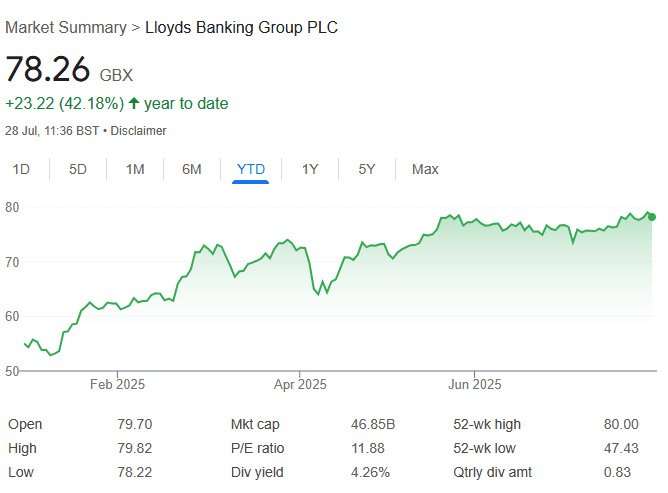What Will Lloyds Share Price Be in 5 Years?
And What It Means for UK SMEs and Tradesmen Navigating Financial Uncertainty
In recent years, Lloyds Banking Group has remained a focal point in the UK financial landscape, not just for investors but for everyday business owners, including small and medium enterprises (SMEs) and tradesmen. As we look ahead to the next five years, many are asking: What will Lloyds share price be in 2029 and what does it mean for people like us?
This isn't just a stock market curiosity. For SMEs and tradesmen, the health of major financial institutions can ripple directly into business cash flow, credit access, and consumer confidence.
The Lloyds Outlook: 5-Year Share Price Forecast
Lloyds’ stock has experienced notable fluctuations in recent years, mainly due to interest rate changes, inflation, housing market shifts, and broader global uncertainty. Financial analysts remain divided, but some projections suggest the share price could range between 55p and 80p in five years, depending on macroeconomic conditions and internal restructuring success.
What’s Driving These Predictions?
- Interest Rate Adjustments: As the Bank of England continues to manage inflation, Lloyds—like other banks—sees its margins affected.
- Housing Market Trends: Lloyds holds a large mortgage portfolio. Any instability in the housing market will directly impact its performance.
- Digital Banking & Fintech Competition: The rise of digital-first banks puts pressure on traditional giants like Lloyds to modernize, which may affect their market position and valuation.
Why Should SMEs and Tradesmen Care?
You may not be a shareholder, but these shifts still matter. Here's why:
1. Access to Business Credit
If Lloyds becomes more risk-averse due to market pressures, small business loan approval processes may become stricter. This could affect your ability to fund growth, purchase equipment, or manage slow seasons.
2. Client Confidence and Spending
When large institutions wobble, consumer confidence often drops. People delay home improvement, renovations, and service hiring, especially in sectors that rely on tradesmen.
3. Shifting Financial Tools
More businesses are being nudged toward online-only services, automated banking, and app-based transactions. Keeping pace with these changes can be challenging without a strong digital foundation.
The Bigger Picture: Why Digital Preparedness Matters More Than Ever
The conversation about Lloyds’ share price isn't just for stock watchers. It's a signal to business owners about where the economy is going and why it’s critical to be prepared.
Whether or not Lloyds thrives, businesses that adapt digitally will be more resilient.
- Affordable mobile apps to streamline services
- Professional websites to enhance credibility and reach
- Smart marketing tools to attract and retain customers
With rising uncertainty, one thing is clear: digital readiness is no longer optional. It’s a strategic decision that puts you in control regardless of what happens on the trading floor.
While we can’t predict the exact share price of Lloyds in 2029, we can be sure of one thing: change is constant. SMEs and tradesmen who stay informed and invest in their digital infrastructure will be far better positioned to thrive no matter what the financial headlines say.
Need help getting started? Let’s talk about building your digital future today.





